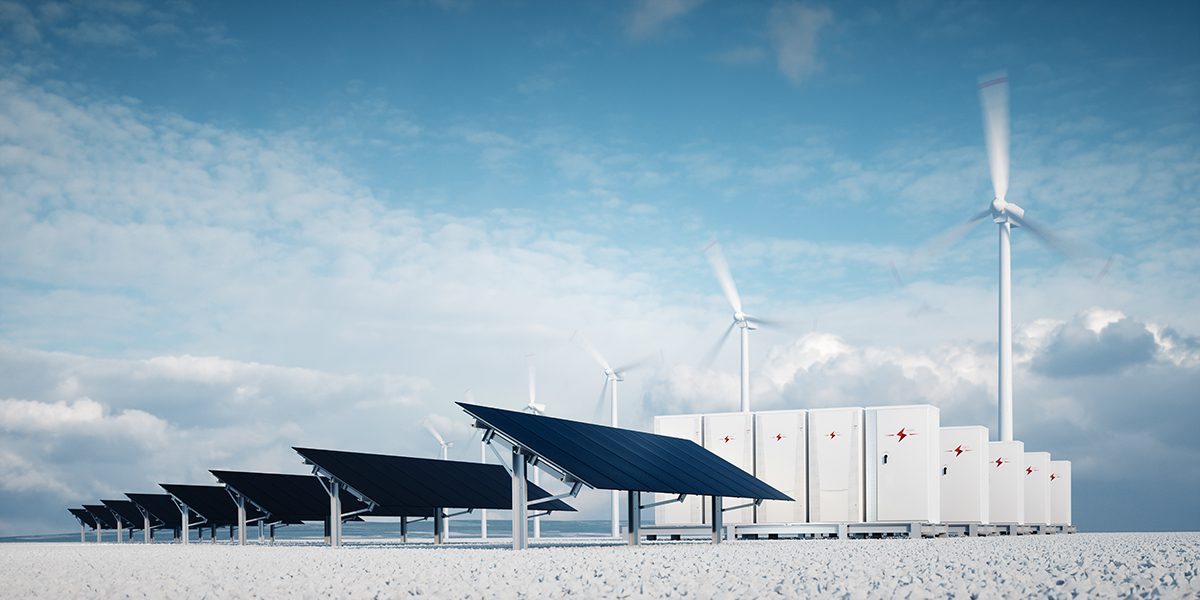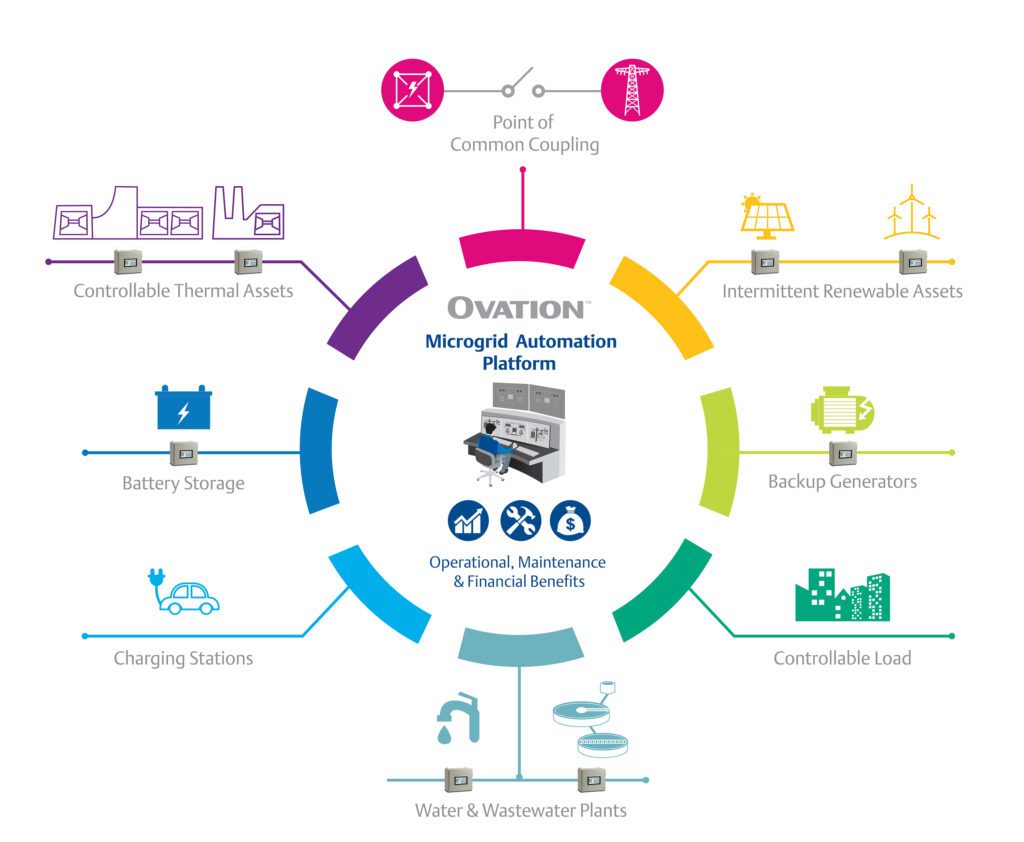The POWER Interview: Emerson Exec Talks Hybrid Facilities
Credit to Author: Darrell Proctor| Date: Thu, 08 Dec 2022 13:44:08 +0000

More companies are providing software and automation technology to the power generation sector, particularly as newer forms of electricity production increase their market share.
Emerson is among those groups, with its technology providing a single, integrated, secure platform that is independent of plant type or the equipment originally installed at a generation facility. James Fraser, VP of Renewables for Emerson, said, “The unified Ovation platform helps to optimize the reliability, performance and production of low-cost energy from hybrid energy systems.” He added, “The scalable Ovation platform enables enhanced reliability and cost-effective operations while providing a pathway to add innovative software easily and cost-effectively for remote operations and data analytics.”

Fraser said these types of solutions for the power generation sector are “helping generate a hybrid future—a future that isn’t far away.” He recently provided POWER with insight about hybrid power plants and their importance for the future of electricity production.
POWER: Could you provide examples of hybrid power plant configurations?
Fraser: Broadly speaking, hybrid energy systems combine renewable and thermal generation, energy conversion and/or storage technologies. There are many ways to create a hybrid energy system for use during peak and off-peak hours. These include:
- Adding battery energy storage to wind farms and solar power plants.
- Developing integrated renewable generation, green hydrogen production and storage and power plants that use hydrogen-capable turbines.
- Integrating small run-of-the-river hydropower plants with municipal microgrids.
- Connecting a solar facility to a natural gas plant.
- Using renewable or nuclear energy resources to produce and store green hydrogen.
- Adding floating solar panels to hydro reservoirs.
- Creating virtual power plants (a group of smaller generators such as wind, solar, gas turbines or demand response programs that band together to virtually operate like a larger asset).
Hybrid power ecosystems are becoming increasingly interesting for industrial process applications where the combination of traditional thermal generation on a production site can be combined with renewable generation to offset carbon emissions. Additionally, excess energy can be used for green hydrogen production and then further processed in compounds, like ammonia, which can then be sold or used as a transportable energy storage media.
Want to learn more about hybrid power plants? Read “Hybrids Combine Technologies to Enhance Electricity Production” in the December 2022 issue of POWER.
POWER: What are the benefits of hybrid power plants (enhanced dispatchability, black-start capability, fuel savings, emissions reduction, etc.)?
Fraser: Hybrid power plants offer many advantages, and for the most part, they are linked closely to reliability and sustainability. Often, these benefits are not siloed but intertwined. Consider …
Hybrid energy systems provide a consistent and continuous source of power. So, even though the sun isn’t shining and the wind isn’t blowing, they help to balance the supply of clean energy. Furthermore, by creating cleaner microgrids that can support industrial processes and other consumer power needs during blackouts, hybrid power plants play an important role in dialing up grid reliability and resiliency. And by integrating green power with thermal generators, emissions and the overall carbon footprint are reduced which, in turn, helps to drive the power industry’s balanced transition toward a more sustainable future.

POWER: How can hybrid power plants optimize the integration of renewable energy?
Fraser: Yes—hybrid power plants optimize the integration of renewable energy. For instance, adding storage to variable renewable generation creates a dispatchable power source that transforms intermittent energy into reliable power. Furthermore, adding renewable energy sources to thermal generators supplements power production with energy that offers lower emissions and a reduced carbon footprint.
POWER: Are there any “cons” to the operation of hybrid power plants?
Fraser: Renewable generation and storage sites generate a considerable amount of data. To optimize operations, it is necessary to integrate many data sources into one system and efficiently manage different generation and storage assets—each with its own control system. While this is not a “con” per se, it can create a two-fold challenge:
- Does the owner/operator have full access to the data?
- How is that data collected and aggregated among multiple systems that are typically from multiple OEMs and of varying vintages?
POWER: Are there concerns about the power quality (i.e., frequency and voltage control) from hybrid power plants?
Fraser: No, not if the hybrid system includes a turbine (gas, steam or hydro) or energy storage (battery, hydrogen) that provides adequate frequency response either through inertial effects of rotating generators or “synthetic inertia” through inverter response and/or energy storage and dispatch.

POWER: What are some of the ancillary services provided by hybrid power plants?
Fraser: Hybrid power plants can provide a variety of ancillary services. These include:
- Frequency response and voltage regulation to quickly respond to short-term imbalances in supply/demand
- Load leveling to reduce the load on peak-generating sources
- Spinning, non-spinning or supplemental reserves to deliver stored power in response to contingency events such as an outage or periods of high demand
- Black start or backup power to avoid costly disruptions and continue normal operations after a system-wide failure or blackout
POWER: Are there challenges with regulatory compliance when it comes to hybrid power plants?
Fraser: As with all generating assets, regulatory compliance is governed by the location of the plant and the regulations set by the system operator responsible for that location and the respective grid codes. Certainly, with an ecosystem of assets within a hybrid energy solution it is incredibly important to ensure that there are strong automation systems and software that coordinate the assets as a whole.
POWER: How can operations and maintenance of hybrid power plants be optimized, and what are the cost savings of O&M for a hybrid when compared to conventional power plants?
Fraser: Great efficiencies can be made by implementing a single, secure and integrated digital foundation that works across multiple vendor equipment types, systems and assets. The software and technologies within that foundational layer capture and contextualize the massive amounts of data generated from embedded control and monitoring applications or third-party software and systems. This provides operators with a single, unified view of operations that eliminates data siloes, complexity and risk. This, in turn, translates into reduced costs, optimized financial and energy performance across renewable portfolios and increased operational efficiency.
—Darrell Proctor is a senior associate editor for POWER (@POWERmagazine).
The post The POWER Interview: Emerson Exec Talks Hybrid Facilities appeared first on POWER Magazine.